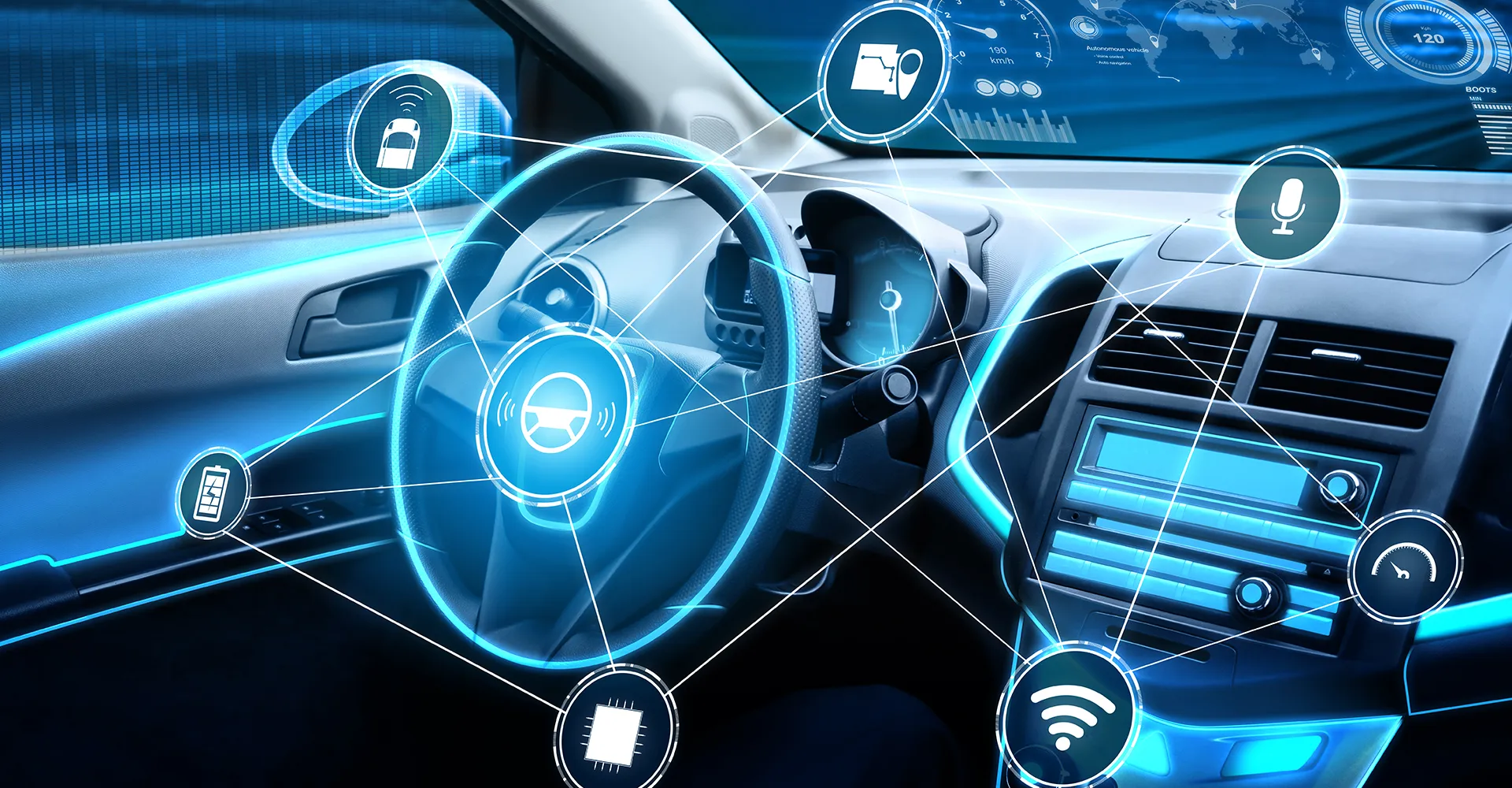When you think about autonomous vehicles, what comes to mind? High-tech sensors, sophisticated algorithms, and possibly even self-driving taxis. But behind the scenes of these revolutionary machines, there’s a crucial piece of technology that’s helping them perform their tasks faster and more efficiently: edge computing.
But how does edge computing enhance the capabilities of autonomous vehicles, and why is it indispensable for their growth? In this blog, we’ll explore the transformative role of this technology in enabling autonomous vehicles to navigate, communicate, and evolve in real-time.
A Mordorintelligence report revealed that Edge Computing Market size is estimated at USD 18.02 billion in 2025.
1. Low Latency For Immediate Decision-Making
One of the most critical requirements for autonomous vehicles is the ability to make split-second decisions. When an AV is driving at high speeds, even a few milliseconds of delay can lead to dangerous situations. Edge computing allows for faster processing by analyzing data locally, closer to the vehicle, rather than sending it to a remote cloud server for processing.
In practical terms, edge computing enables AVs to instantly process the data from sensors like cameras and LIDAR and make decisions on the spot.
For example, when an obstacle suddenly appears in the vehicle’s path, the system can immediately process the incoming data, identify the object, and adjust the vehicle’s speed or trajectory within milliseconds — preventing accidents and ensuring safe driving.
Key Benefits:
- Edge-type computing processes data locally to minimize delay.
- Real-time decision-making is essential for AV safety.
- Quicker reaction times can avoid accidents or collisions.
2. Enhanced Sensor Fusion And Data Integration
Autonomous vehicles gather data from a variety of sensors, including cameras, radar, LIDAR, ultrasonic sensors, and GPS. The data from these sensors must be integrated to create a unified, accurate picture of the vehicle’s surroundings. This process, known as sensor fusion, is resource-intensive and requires a significant amount of computing power.
- Combining data from various sensors without cloud reliance.
- Better recognition of obstacles and pedestrians in the environment.
- Provides ongoing updates to the vehicle’s surroundings in real-time.
According to Statista, the Internet of Things market in Japan is projected to grow by 6.96% (2025-2029) resulting in a market volume of US$39.61bn in 2029
3. Increased Reliability And Resilience
Reliability is a key factor in the success of autonomous vehicles. A vehicle must remain operational in various environments, including areas with poor network connectivity. Imagine an autonomous car driving through a remote area with no reliable cellular network — without edge-based computing, the vehicle’s systems would struggle to process crucial data in such areas, resulting in potential failure or accidents.
This smart computing ensures that vehicles remain operational even in environments where cloud connectivity is inconsistent or unavailable. By processing data locally, AVs can function independently of external networks, making them more resilient to connectivity disruptions.
4. Optimized Data Bandwidth And Cost Efficiency
Sending large amounts of sensor data to the cloud for processing consumes significant bandwidth. With autonomous vehicles generating terabytes of data per hour, constantly sending this data to the cloud is not only costly but also inefficient. Bandwidth limitations can delay data transmission, which in turn impacts the responsiveness of the vehicle.
Edge-type computing reduces the need for continuous cloud communication by processing most of the data locally. Only relevant data is sent to the cloud for storage or further analysis, dramatically reducing bandwidth usage and improving overall system efficiency. This also lowers operational costs, as less data is transmitted to remote servers.
Key Benefits:
- Reduces the need for constant data transfer to the cloud.
- Lower data transmission costs by processing locally.
- Minimizes bandwidth bottlenecks for faster data processing.
5. Support for Autonomous Vehicle Training And AI Models
Edge-based computing plays a crucial role in supporting the training and refinement of AI models used in autonomous vehicles (AVs). Autonomous vehicles rely heavily on AI algorithms to make real-time decisions, navigate complex environments, and interact safely with other road users.
This type of computing helps by enabling faster, more efficient training of these models directly within the vehicle’s system. Instead of relying solely on cloud-based training, which can be delayed by latency and bandwidth constraints, edge-based computing allows for localized processing of data generated by the vehicle’s sensors.
- Localized AI model training using real-time sensor data ensures quick updates.
- Immediate processing eliminates delays caused by cloud data transfers, speeding up decision-making.
- Vehicles can continuously learn from their environment, refining AI models without waiting for centralized updates.
- AI models can adapt to unique conditions, learning from diverse driving environments more quickly.
6. Improved Vehicle-to-Vehicle And Vehicle-to-Infrastructure Communication
For autonomous vehicles to operate safely, they must communicate not only with their internal systems but also with other vehicles (Vehicle-to-Vehicle, V2V) and infrastructure (Vehicle-to-Infrastructure, V2I). This communication allows AVs to share information about road conditions, traffic, and other hazards in real-time.
Edge-type computing enables faster and more reliable V2V and V2I communication by processing data at the source. This allows AVs to instantly exchange information with each other and with infrastructure such as traffic lights, road signs, and other smart city technologies. This communication enhances coordination between vehicles and infrastructure, enabling smoother and safer navigation through busy urban environments.
An NIH report revealed that edge servers analyze and store the data acquired by the sensors in vehicles. Low-latency communication is made possible by these services.
Conclusion
The role of edge computing in the development of autonomous vehicles cannot be overstated. It provides the necessary infrastructure to process vast amounts of data quickly, enabling AVs to operate efficiently, safely, and reliably.
By reducing latency, improving sensor fusion, and ensuring seamless communication, edge-based computing powers the capabilities that make self-driving cars a reality.
As the technology continues to evolve, it will become an even more integral part of autonomous vehicle systems, ensuring that they remain scalable, efficient, and safe for mass adoption.
Are you ready to see how edge-type computing can continue to shape the future of autonomous vehicles? With its ability to improve real-time decision-making, boost safety, and reduce costs, edge computing is undeniably driving the growth of this transformative technology.





